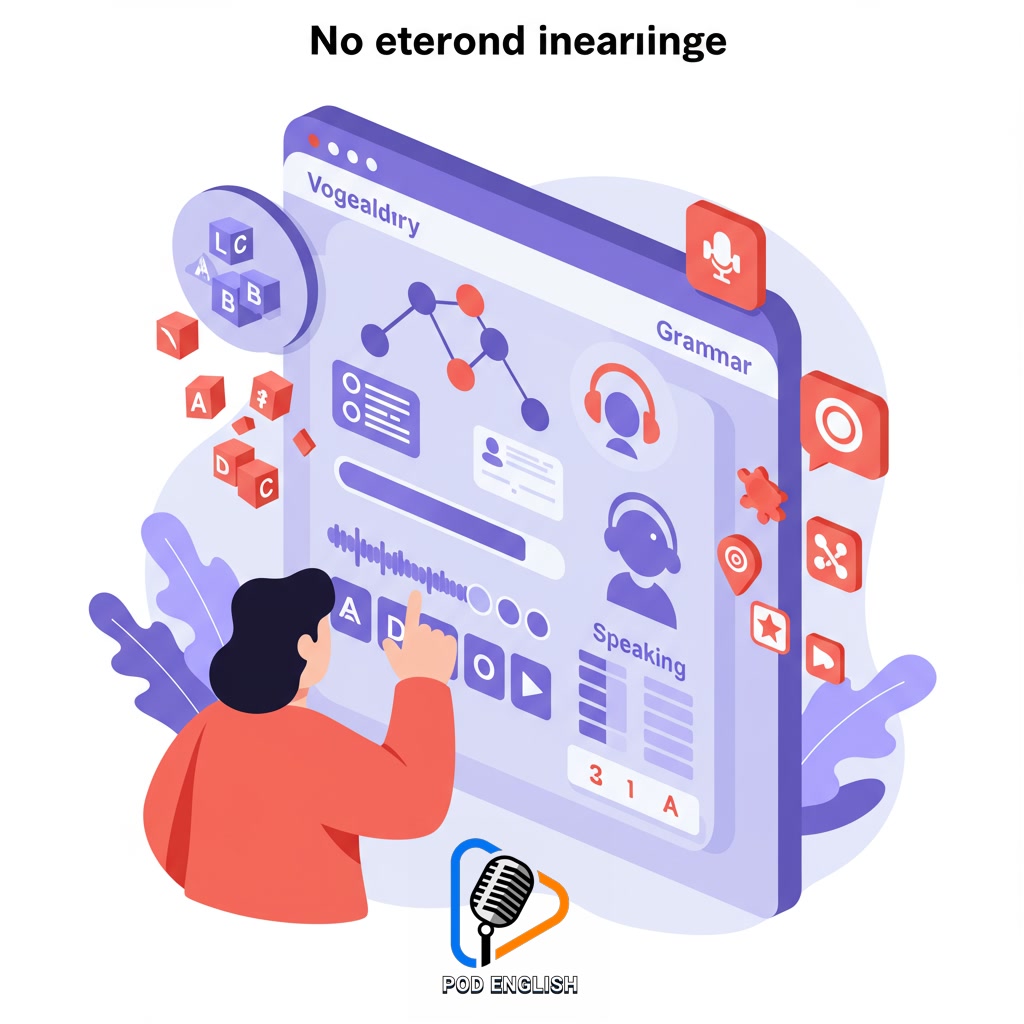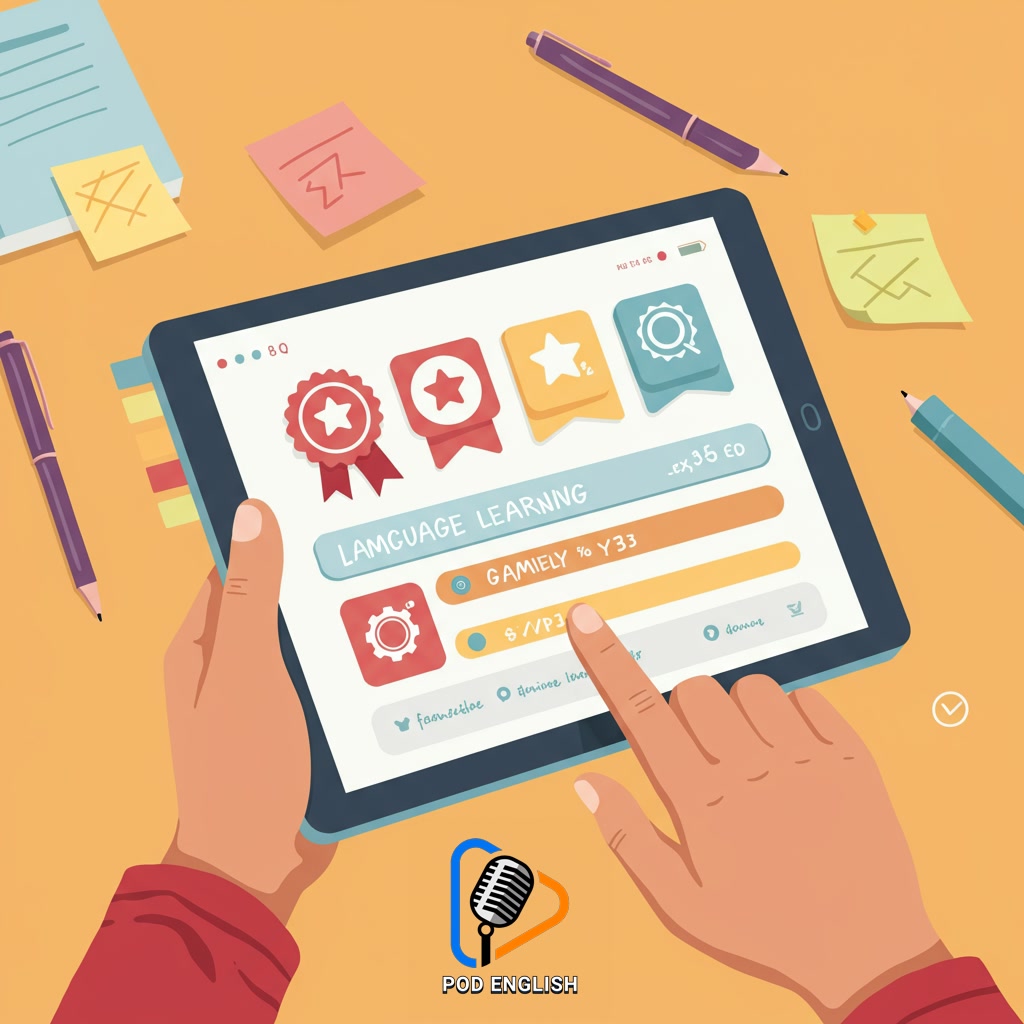Learn English
Level Up Your English: Gamifying Your Daily Study Routine for Fun Learning

This content explores how to transform your daily English study into an engaging and enjoyable activity. Discover practical ways to apply gamification principles to your language practice. Learn methods to make improving your English skills feel less like a chore and more like a rewarding game. By integrating fun elements, you can boost motivation and achieve better results in your English acquisition journey.
Table of Contents
- Section 1: Understanding Gamification: Why It Works for English Learning
- Section 2: Assessing Your Current English Study Routine
- Section 3: Practical Gamification Techniques for English Skills (Vocabulary, Grammar, Listening, Speaking)
- Section 4: Tools and Resources to Gamify Your Study
- Section 5: Building Your Personalized Gamified English Study Plan
- Section 6: Tracking Progress and Maintaining Motivation
Section 1: Understanding Gamification: Why It Works for English Learning
Gamification is the application of game-design elements and game principles in non-game contexts. When applied to English learning, it transforms traditionally structured study into a more engaging and motivating activity. This approach works because games are inherently designed to be enjoyable and rewarding. By introducing elements like points, levels, badges, leaderboards, and challenges into your English routine, you create clear goals and tangible feedback on your progress. This makes the learning journey feel less like a chore and more like an exciting quest. The intrinsic motivation gained from the fun and the extrinsic rewards from achieving milestones significantly boost your willingness to practice regularly and push through difficulties, ultimately leading to more effective language acquisition.

Understanding Gamification: Why It Works for English Learning
Section 2: Assessing Your Current English Study Routine
Before diving into gamification, it’s crucial to take an honest look at how you currently study English. What does your typical week look like? How much time do you spend practicing listening, speaking, reading, and writing? Identify which activities you find enjoyable and which feel like a chore. Note down what methods seem effective for you and where you often lose motivation. Understanding your existing habits, challenges, and preferences is the essential first step. This assessment will provide a clear picture of your starting point and highlight specific areas where applying game elements can make the biggest positive impact, transforming less engaging tasks into more rewarding experiences.

Assessing Your Current English Study Routine
Section 3: Practical Gamification Techniques for English Skills (Vocabulary, Grammar, Listening, Speaking)
Now, let’s apply gamification directly to your core English skills. For vocabulary, transform flashcard sessions into point-scoring challenges or track word acquisition like collecting items. Grammar practice can become a quest to identify patterns or a quiz where you earn points for correct answers. Improve listening by turning podcasts into scavenger hunts for specific phrases or tracking comprehension levels like unlocking achievements. Speaking can be gamified by recording yourself and measuring progress like leveling up fluency, or using language exchange apps as co-op missions. The key is to introduce tracking, points, challenges, and rewards to make the learning process feel engaging and measurable, turning practice into play across all skill areas.

Practical Gamification Techniques for English Skills (Vocabulary, Grammar, Listening, Speaking)
Section 4: Tools and Resources to Gamify Your Study
Following the previous section on applying gamification to skills, this part explores the specific tools and resources available to help you implement these strategies. Many language learning applications and websites are built with integrated gamified elements, offering points for task completion, badges for achieving milestones, and sometimes competitive features like leaderboards. Consider leveraging apps that structure learning progress into distinct levels or platforms that transform vocabulary drills into timed, point-scoring challenges. Beyond digital options, physical resources like progress charts you can fill in, sticker reward systems, or even custom-made game boards for practicing grammar rules can be highly effective. The goal is to identify and utilize tools that make tracking your improvements and celebrating small successes feel genuinely rewarding, turning your regular study time into an engaging and productive quest.

Tools and Resources to Gamify Your Study
Section 5: Building Your Personalized Gamified English Study Plan
Building your personalized gamified English study plan starts with understanding your specific learning objectives. What skills do you want to improve – vocabulary, grammar, speaking, listening, or a combination? Once your goals are clear, you can select gamification elements that motivate you. Will you track points for completing exercises, earn badges for mastering topics, or progress through ‘levels’ of difficulty? Integrate the tools and resources from the previous section into this framework. For example, using a language app might earn you points towards a daily goal, while practicing speaking with a partner could be a ‘quest’ with a reward. Define your reward system – small, frequent rewards for daily tasks and larger ones for reaching significant milestones. Tailor the plan to your interests; if you love movies, make watching and summarizing English films a high-point activity. Regularly review and adjust your plan to keep it challenging and engaging, ensuring your English learning journey remains fun and effective.

Building Your Personalized Gamified English Study Plan
Section 6: Tracking Progress and Maintaining Motivation
After building your personalized gamified plan, the crucial next step is effectively tracking your progress to maintain momentum and motivation. Think of tracking as earning experience points (XP) in a game. Every study session, completed exercise, or learned vocabulary word contributes to your overall score or helps you level up. Implement a simple system, perhaps a spreadsheet, a dedicated app, or even just a notebook where you log your activities and achievements. Visualizing your progress through charts, graphs, or a ‘level’ indicator can be incredibly motivating, showing you how far you’ve come and highlighting areas for improvement. Celebrating small wins, like completing a study streak or mastering a difficult grammar point, acts as a reward, reinforcing positive study habits. This continuous loop of action (studying), tracking (seeing progress), and reward (motivation boost) is key to turning your English learning into a sustainable and engaging game.
Tracking Progress and Maintaining Motivation













